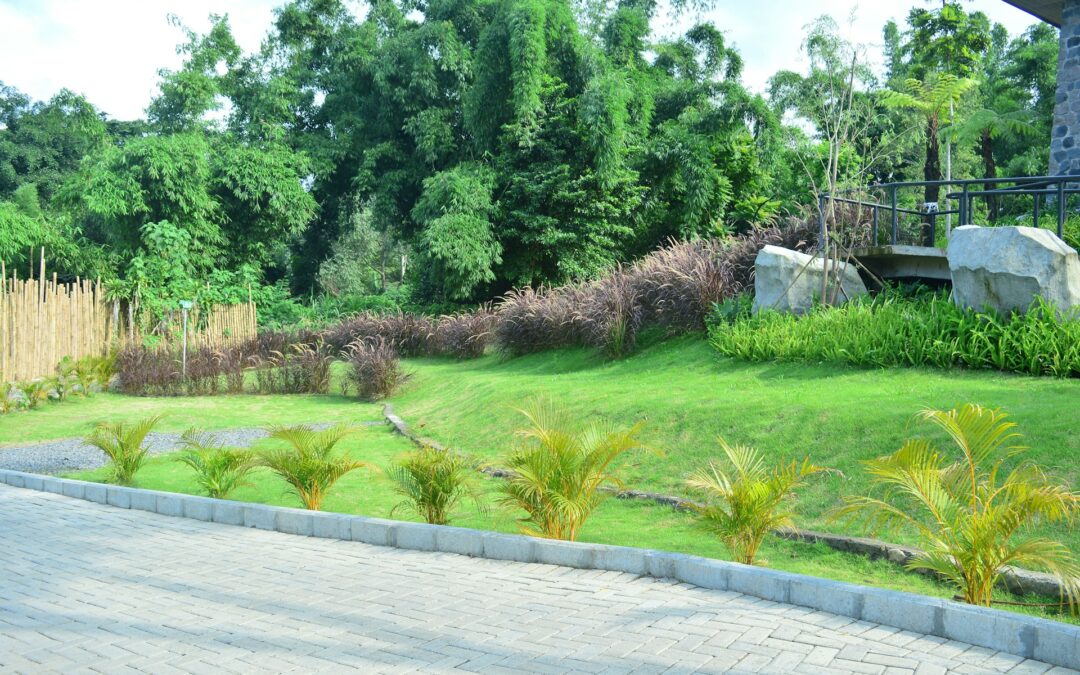Maintaining proper landscape drainage is crucial to ensuring a vibrant, healthy garden. When rain is abundant, inefficient drainage systems can wreak havoc on even the most robust landscapes. Without appropriate drainage, excess water can collect, causing damage to plants and soil structure. Good drainage practices help prevent waterlogged conditions and protect your green spaces, making your yard not just attractive but also resilient.
Many homeowners don’t realize that a well-thought-out drainage plan can greatly enhance the appearance of their garden. It is not only about managing excess water; effective drainage protects plants and helps them reach their full potential. By implementing smart drainage solutions, you ensure your garden remains lush and colorful throughout the year, regardless of rainfall.
Signs of Poor Landscape Drainage
Before diving into improvement techniques, it’s essential to recognize the warning signs of poor drainage. These visible indicators can guide you in diagnosing any existing problems in your garden.
1. Puddles and Standing Water: After a rainstorm, check for puddles that take a long time to disappear. Persistent standing water is a clear sign of inadequate drainage.
2. Waterlogged Soil and Root Rot: Saturated soil typically struggles to support plant roots, leading to root rot. If your plants appear unhealthy or are unexpectedly wilting, waterlogging could be the culprit.
3. Uneven Plant Growth and Erosion: When water flows improperly, it carries away soil nutrients. This erosion can lead to uneven plant growth, with some areas thriving and others lagging behind.
Simple Techniques to Improve Landscape Drainage
Addressing drainage issues doesn’t have to be complex. Here are some straightforward strategies you can use to improve your landscape’s drainage:
– Improving Soil Quality: Add organic matter like compost to clay-heavy soils to enhance drainage. Mixing sand with soil can also help create a loam-like texture that drains more efficiently.
– Proper Grading: Make sure your yard is graded appropriately to direct water away from structures. Start by assessing the slope of your land and then adjust the landscaping to facilitate proper water flow.
– Installing a Drain Irrigation System: Consider incorporating a drain irrigation system, especially in areas prone to heavy rainfall like Lafayette, LA. This system channels excess water away from key plant areas, preventing water from pooling.
Implementing these strategies can transform a soggy garden into a thriving landscape. With careful attention to soil and grading, you lay the groundwork for plants to flourish without the threat of water damage. By using an irrigation system, you ensure water management is efficient and effective, paving the way for a visually appealing and healthy outdoor space.
Rain Gardens and French Drains
To further improve landscape drainage, consider integrating rain gardens and French drains into your strategy. Rain gardens are shallow, plant-filled depressions in the landscape that collect and absorb runoff. These gardens not only help manage water effectively but also create a beautiful ecosystem for wildlife.
To create a rain garden, start by selecting plants that thrive in both wet and dry conditions, such as native grasses and wildflowers. Place the rain garden at a low point in your yard where water naturally converges, ensuring it captures as much runoff as possible. When well-designed, rain gardens manage excess water while adding visual appeal to your landscape.
French drains offer another effective solution. These are trenches filled with gravel and a perforated pipe that directs water away from problematic areas. To install one, dig a trench where water tends to gather, ensuring a slight downward slope away from your house or garden. Lay a perforated pipe in the trench and cover it with gravel, then return the soil and landscape over it. This setup guides water to a designated safe area, reducing pooling and erosion.
Regular Maintenance Tips
Regular maintenance is key to ensuring your drainage solutions continue to perform effectively. Inspecting your systems regularly helps catch small issues before they develop into bigger problems.
– Regular Inspection: Check for any blockages in your drains, such as leaves or soil buildup, and clear them promptly. Ensure the grading hasn’t shifted over time or been affected by weather conditions.
– Seasonal Tasks: In spring and fall, remove debris from gutters and downspouts, making sure water flows freely. During heavy rain periods, monitor your systems to confirm they handle water efficiently.
– Troubleshooting Common Issues: If you notice water pooling, reassess the grading and adjust as needed. For systems like rain gardens, ensure plants are healthy and adequately spaced to absorb water properly.
Ensuring a Healthy Landscape
Maintaining a well-drained landscape doesn’t just protect plants; it lays the foundation for an outdoor space that brings year-round enjoyment. Investing time in drainage solutions and routine check-ups promotes a robust plant environment.
Think ahead about seasonal changes and their impact on your garden’s drainage. By being proactive, you can prevent water-related issues before they arise. A healthy, well-designed drainage system contributes to a beautiful, thriving garden that stays lush despite any weather challenges. Embrace these strategies, and keep your garden flourishing and inviting for all to admire.
Looking to enhance your landscaping with effective drainage solutions? Let EdenScapes assist you with a customized drain irrigation system that suits your needs. Explore how we can transform your garden’s health and appearance with our expert services. Contact us for comprehensive information on creative and practical design solutions.

